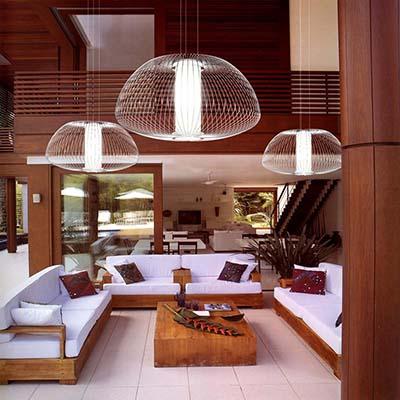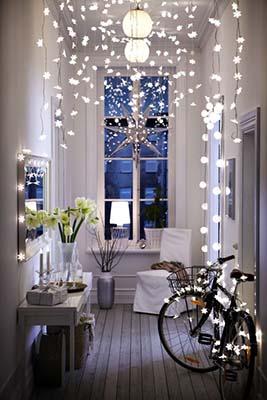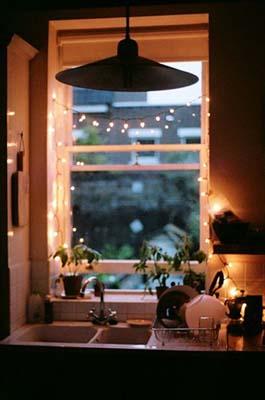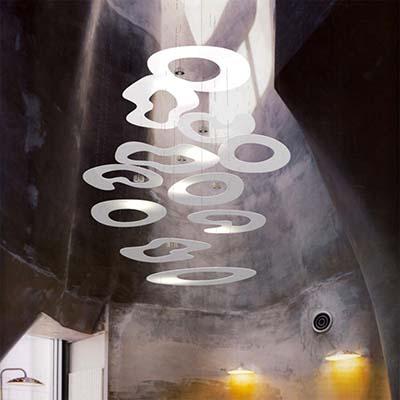
 The setting in which you live has a strong impact on the way you feel and on your attitude. It is highly connected to what we call “metafashion”, which is everything you do before and after dressing up.
The setting in which you live has a strong impact on the way you feel and on your attitude. It is highly connected to what we call “metafashion”, which is everything you do before and after dressing up.
One very important aspect when it comes to decorating a space, whether it is your home or room, your office or your garage, the lights you use can set the tone for the whole atmosphere of an environment.
We’re sure you’ve seen spaces in your life such as hallways or room where the light was giving the whole place a creepy vibe, regardless of what the décor looked like. And, on the other hand, we’re also sure that you’ve seen very modest places, which were lit in a way that made them feel comfortable and relaxing.
This is why you should pay strong attention to the light you have in your room. We definitely recommend investing in a warm and cozy light. Of course, this can mean different things. For example, warm, orange-yellow light is more appropriate for a bedroom atmosphere, while a bright, very white and clear light is what can work best in a working environment.
Here are some tips on choosing custom lightings for your house:
Warm vs. cool


Color temperature is a very important factor you should consider when choosing the lights for your home, workplace or any other environment. Basically, color temperature does not describe the temperature of the object that creates light, but the color it creates, which is counter-intuitive: the higher the color temperature, the “cooler” a lamp will look.
There are two types of light: warm light, such as the light created by regular light bulbs, which has around 2700-3000K (degrees Kelvin) and cool
light, such as the one created by neon lights, which burns at 4000K+. These indicators are mentioned on the packaging of a light bulb or any other lighting device.
Choosing a type


Mix and match
One of the main questions people have about choosing lights for your environment is whether you should mix and match the two types of light: warm light and cool light. While some decorators claim that you should mix the two (some say going for a warm light in the bedroom and for a cool one in the kitchen is a good idea), we think that you should keep it cohesive and stick to only one type. While cohesion is the first reason why you should do this, the second reason is that if you have only one type of light all around, your eyes don’t need to always adapt to new lighting condition. Keeping everything cohesive keeps things smooth.
This should not mean that you should not have both types of lights in your house. The reason for this is that sometimes you need both types. For example, when you are checking out your outfits, you should see whether it looks just as good under warm light as it does under cool light.
Artists or people who use makeup or work with colors in any way should also consider having different types of lights to check how their work is coming along in different conditions.
Big vs. small


When you are choosing the lighting scheme for any place, you should always consider how many lighting objects you need and want and their size. We recommend going for at least two light sources, but don’t have a maximum number, as that number varies depending on the size and purpose of the room (three light sources could work for a regular, average room).
However, what we do recommend is to use both bigger and smaller light sources. For example, for a living room, a big chandelier can be complimented by two or three medium-sized lamps and some small desk lamps. Using light sources of different sizes will add rhythm and style to a room.
Positioning
While the positioning of any light source should be carefully thought-through and considered from both a practical and an aesthetic reason, our tip is not to stop at the classic “hanging from the ceiling” position. Adding lights from different angles will make the room more vibrant and will give it more depth.
Direct vs. muted


There are two main types of lights: direct and muted lights. Direct light is basically light coming directly from a light bulb, while muted lights have a filter between the light source and the eye, such as lamp shade.
Generally, direct light is harder to “digest”, as it is harder on the eye than muted light. Of course, placing a light under a filter will dim its power, but adding either a stronger light bulb or more lighting sources will compensate for that and give you the best environment you can ask for.
Custom lightings do not have to be unaffordable and reserved for people of means. Today you can find a wide array of lights, lamps and everything you need for your home at any price. This being said, we definitely encourage you to invest in your home, as making a bigger investment will save you more time and money in the long run. Of course, more expensive doesn’t necessarily mean that the product is better, but that is often the case.
Investing in custom lighting is a great way to add personality to an environment and to make it look more comfortable.
Fraquoh and Franchomme
P.S. We want to hear from you! How do you illuminate your environment? What type or types of light do you use? What is the effect you are going for? For more articles on style, fashion tips and cultural insights, you can subscribe to Attire Club via e-mail or follow us on Facebook, Twitter or Instagram!

